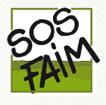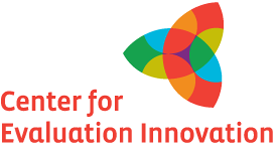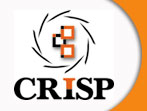Résultats de la recherche
Displaying 91 - 100 of 1076 results.
Activités non agricoles et territoires ruraux
Qu’en est-il des « activités non agricoles » ? Peuvent-elles être pensées au-delà d’une perspective de survie ? De la transformation des récoltes à la commercialisation d’artisanat culturel, en passant par le transport routier, la location de téléphone portable ou le conseil en technologies de l’information, les activités non agricoles occupent un éventail très large. Leur utilité est de plus en plus reconnue.
Sujet(s):
renforcement des capacités (RC)communicationsécurité alimentaire et nutritionnelleÉgalité entre les sexessystèmes d'innovationinnovationpolitiques d'innovationsystèmes de connaissances et d'informationTIC (Technologies de l'information et de la communication)Knowledge management/Gestion des connaissancesConnaissance localeapprentissageprocessus multipartitesréseaupolitiquesengagement du secteur privéengagement du secteur publicdéveloppement ruralchaînes de valeursecteur agroalimentairePetits agriculteurs...
Année de publication:
2010Funding agricultural research for development: Lessons from PAEPARD
Most agencies supporting agricultural research in sub-Saharan Africa (SSA) provide funds for discrete projects over specific periods of time, usually a maximum of three years. Research topics identified for calls for proposals are not always well aligned with users’ needs. In particular, research topics may not reflect the priorities of organizations - such as farmer organizations and private agribusinesses, with interests in the research outcomes; they are not generally supported to play a significant role as project partners.
Sujet(s):
Service de vulgarisationpromotion/plaidoyercourtagerenforcement des capacités (RC)communicationéducationsécurité alimentaire et nutritionnellesystèmes d'innovationinnovationplates-formes d'innovationsystèmes de connaissances et d'informationKnowledge management/Gestion des connaissancesapprentissageapprentissage institutionnelapprentissage organisationnelprocessus multipartitesréseauengagement du secteur privéengagement du secteur publicrechercherecherche participativerecherche et développement (R & D)recherche pour le développement (R4D)systèmes de rechercheRecherche en systèmesdéveloppement ruralagriculture durablechaînes de valeursecteur agroalimentaire...
Année de publication:
2017Financer la recherche agricole pour le développement : les enseignements de PAEPARD
La plupart des agences qui soutiennent la recherche agricole en Afrique subsaharienne fournissent des financements à des projets distincts durant des périodes spécifiques, en général pour une durée maximale de trois ans. Les sujets de recherche identifiés pour les appels à propositions ne correspondent pas toujours aux besoins des utilisateurs. Ils peuvent, en particulier, ne pas refléter les priorités des organisations – comme les organisations paysannes ou les entreprises agricoles privées, pourtant intéressées par les résultats de la recherche.
Sujet(s):
Service de vulgarisationpromotion/plaidoyercourtagerenforcement des capacités (RC)communicationéducationsécurité alimentaire et nutritionnellesystèmes d'innovationinnovationplates-formes d'innovationsystèmes de connaissances et d'informationKnowledge management/Gestion des connaissancesapprentissageapprentissage institutionnelapprentissage organisationnelprocessus multipartitesréseauengagement du secteur privéengagement du secteur publicrechercherecherche participativerecherche et développement (R & D)recherche pour le développement (R4D)systèmes de rechercheRecherche en systèmesdéveloppement ruralagriculture durablechaînes de valeursecteur agroalimentaire...
Année de publication:
2017Stocks de proximité en Afrique de l’Ouest : les organisations paysannes en première ligne
Depuis quelques années, en Afrique de l’Ouest, les institutions régionales et leurs bailleurs de fonds reconnaissent aux systèmes de stockage alimentaire de proximité un rôle à jouer dans la sécurité alimentaire et dans la régulation des marchés. L’appui aux stocks de proximité, considérés comme la première ligne de défense en cas de crise alimentaire, est explicitement retenu dans la stratégie de stockage de la CEDEAO, de même que le renforcement des capacités de collecte, de stockage et de mise en marché des organisations de producteurs dans une perspective de régulation du marché.
Sujet(s):
renforcement des capacités (RC)communicationsécurité alimentaire et nutritionnellesystèmes d'innovationinnovationKnowledge management/Gestion des connaissancesConnaissance localeapprentissageprocessus multipartitesnégociationréseauapproches participativesdéveloppement ruralagriculture durablechaînes de valeursecteur agroalimentairePetits agriculteurs...
Année de publication:
2016FAO e-learning courses
The FAO e-learning courses cover a wealth of topics in the areas of food and nutrition security, social and economic development and sustainable management of natural resources.
All our courses are designed for self-paced learning, and offered free of charge.
Sujet(s):
renforcement des capacités (RC)changement climatiquecommunicationsécurité alimentaire et nutritionnelleÉgalité entre les sexesévaluation de l'impactsystèmes de connaissances et d'informationKnowledge management/Gestion des connaissancesapprentissagesuivi et évaluation (S&E)politiquesengagement du secteur publicdéveloppement ruralagriculture durable...
Année de publication:
2018The role of women producer organizations in agricultural value chains. Practical lessons from Africa to India
This report is based on the outputs of a one week Exposure and Exchange Programme (EEP) in India hosted by the Self-employed Women’s Association (SEWA) with African women leaders of producer organizations from West and Central Africa. This report critically evaluates the SEWA model and draws conclusions relevant to African women producers organizations to better meet the challenges of raising Africa’s agricultural potential, improve incomes for small farmers, and ensure greater food security.
Sujet(s):
Année de publication:
2011The application of information and communication technologies in agricultural and rural development in Egypt
Participatory communication in development aims to facilitate the integration of interpersonal communication methods with conventional and new media channels, with the focus on encouraging all stakeholders to participate in the process. The growth of internet-based technologies has created new opportunities for facilitating this participation and enhancing the ability of resource-poor communities to access information and support and to share experiences and knowledge.
Sujet(s):
renforcement des capacités (RC)communicationTIC (Technologies de l'information et de la communication)processus multipartitesapproches participativesdéveloppement rural...
Année de publication:
2010Flash flood risk management: a training of trainers manual
This Training of Trainers Manual is designed to help build the capacity of trainers in flash flood risk management, who can then disseminate the knowledge to a larger number of practitioners. The manual presents an eight-day course including a three-day field trip. Detailed lesson plans for 21 sessions are followed by resource materials that will enable the trainers to replicate the course in their own work areas.
Sujet(s):
renforcement des capacités (RC)Outils au sujet de RCchangement climatiquecommunicationéducationfacilitationÉgalité entre les sexesinnovationConnaissance localeapprentissagesuivi et évaluation (S&E)approches participativespolitiquesrecherche...
Année de publication:
2011Pathways for Change: 10 Theories to Inform Advocacy and Policy Change Efforts
This brief report lays out ten theories of advocacy and policy change. These theories are intended to articulate the policy making process and identify causal connections supported by research to explain how and why a change may or may not occur. It further provides examples of the way in which advocates, funders, and evaluators can use these theories in their work.
Sujet(s):
promotion/plaidoyerrenforcement des capacités (RC)communicationsuivi et évaluation (S&E)réseaupolitiquesrecherche...
Année de publication:
2013Building capacities for innovation management in extension and advisory services
This paper builds on experiences from the Research Into Use programme in South Asia that tried to up-scale promising research outputs into wider use. The experience suggests that while facilitating access to technology is important in putting research into use, it has value only when it is bundled together with other innovation-management tasks such as: developing networks, organising producers, communicating research needs, mediating conflicts, facilitating access to inputs and output services, convening innovation platforms, and advocating for policy change and other negotiated changes in
Sujet(s):
Service de vulgarisationrenforcement des capacités (RC)communicationvulgarisationsystèmes d'innovationinnovationnégociationrecherche...
Année de publication:
2013Pages
Sorting block
Filtrer par idiome
Filtrer par sujet(s)
- (-) Remove communication filter communicationcommunication
- (-) Remove food and nutrition security filter food and nutrition securityfood and nutrition security
- communication (117) Apply communication filter communication
- communication (68) Apply communication filter communication
- communication (78) Apply communication filter communication
- communication (725) Apply communication filter communication
- communication (222) Apply communication filter communication
- communication (66) Apply communication filter communication
- communication (156) Apply communication filter communication
- communication (199) Apply communication filter communication
- communication (110) Apply communication filter communication
- communication (224) Apply communication filter communication
- communication (154) Apply communication filter communication
- communication (89) Apply communication filter communication
- communication (737) Apply communication filter communication
- communication (406) Apply communication filter communication
- communication (323) Apply communication filter communication
- communication (125) Apply communication filter communication
- communication (354) Apply communication filter communication
- communication (115) Apply communication filter communication
- communication (102) Apply communication filter communication
- communication (286) Apply communication filter communication
- communication (194) Apply communication filter communication
- communication (398) Apply communication filter communication
- communication (244) Apply communication filter communication
- communication (280) Apply communication filter communication
- communication (292) Apply communication filter communication
- communication (413) Apply communication filter communication
- communication (30) Apply communication filter communication
- communication (365) Apply communication filter communication
- communication (568) Apply communication filter communication
Filtrer par auteur(s)
- communication (8) Apply communication filter communication
- communication (6) Apply communication filter communication
- communication (4) Apply communication filter communication
- communication (25) Apply communication filter communication
- communication (4) Apply communication filter communication
- communication (5) Apply communication filter communication
- communication (5) Apply communication filter communication
- communication (4) Apply communication filter communication
- communication (5) Apply communication filter communication
- communication (4) Apply communication filter communication
- communication (7) Apply communication filter communication
- communication (4) Apply communication filter communication
- communication (4) Apply communication filter communication
- communication (4) Apply communication filter communication
- communication (34) Apply communication filter communication
- communication (35) Apply communication filter communication
- communication (5) Apply communication filter communication
- communication (4) Apply communication filter communication
- communication (4) Apply communication filter communication
- communication (4) Apply communication filter communication
- communication (6) Apply communication filter communication
- communication (5) Apply communication filter communication
- communication (4) Apply communication filter communication
- communication (4) Apply communication filter communication
- communication (4) Apply communication filter communication
- communication (4) Apply communication filter communication
- communication (3) Apply communication filter communication
- communication (5) Apply communication filter communication
- communication (3) Apply communication filter communication
- communication (4) Apply communication filter communication
- communication (5) Apply communication filter communication
- communication (4) Apply communication filter communication
- communication (20) Apply communication filter communication
- communication (4) Apply communication filter communication
- communication (5) Apply communication filter communication
- communication (4) Apply communication filter communication
- communication (4) Apply communication filter communication
- communication (4) Apply communication filter communication
- communication (5) Apply communication filter communication
- communication (4) Apply communication filter communication
- communication (3) Apply communication filter communication
- communication (15) Apply communication filter communication
- communication (6) Apply communication filter communication
- communication (3) Apply communication filter communication
- communication (23) Apply communication filter communication
- communication (39) Apply communication filter communication
- communication (13) Apply communication filter communication
- communication (4) Apply communication filter communication
- communication (4) Apply communication filter communication
- communication (5) Apply communication filter communication
Filtrer par pays
- communication (64) Apply communication filter communication
- communication (55) Apply communication filter communication
- communication (52) Apply communication filter communication
- communication (50) Apply communication filter communication
- communication (47) Apply communication filter communication
- communication (37) Apply communication filter communication
- communication (36) Apply communication filter communication
- communication (36) Apply communication filter communication
- communication (33) Apply communication filter communication
- communication (33) Apply communication filter communication
- communication (32) Apply communication filter communication
- communication (31) Apply communication filter communication
- communication (30) Apply communication filter communication
- communication (30) Apply communication filter communication
- communication (29) Apply communication filter communication
- communication (29) Apply communication filter communication
- communication (28) Apply communication filter communication
- communication (28) Apply communication filter communication
- communication (27) Apply communication filter communication
- communication (26) Apply communication filter communication
- communication (26) Apply communication filter communication
- communication (24) Apply communication filter communication
- communication (23) Apply communication filter communication
- communication (22) Apply communication filter communication
- communication (20) Apply communication filter communication
- communication (20) Apply communication filter communication
- communication (19) Apply communication filter communication
- communication (18) Apply communication filter communication
- communication (16) Apply communication filter communication
- communication (16) Apply communication filter communication
- communication (15) Apply communication filter communication
- communication (13) Apply communication filter communication
- communication (13) Apply communication filter communication
- communication (13) Apply communication filter communication
- communication (13) Apply communication filter communication
- communication (13) Apply communication filter communication
- communication (13) Apply communication filter communication
- communication (12) Apply communication filter communication
- communication (12) Apply communication filter communication
- communication (12) Apply communication filter communication
- communication (12) Apply communication filter communication
- communication (11) Apply communication filter communication
- communication (11) Apply communication filter communication
- communication (11) Apply communication filter communication
- communication (11) Apply communication filter communication
- communication (11) Apply communication filter communication
- communication (10) Apply communication filter communication
- communication (10) Apply communication filter communication
- communication (10) Apply communication filter communication
- communication (9) Apply communication filter communication
Filtrer par éditeur(s)
- communication (111) Apply communication filter communication
- communication (64) Apply communication filter communication
- communication (46) Apply communication filter communication
- communication (41) Apply communication filter communication
- communication (39) Apply communication filter communication
- communication (39) Apply communication filter communication
- communication (32) Apply communication filter communication
- communication (28) Apply communication filter communication
- communication (21) Apply communication filter communication
- communication (18) Apply communication filter communication
- communication (16) Apply communication filter communication
- communication (16) Apply communication filter communication
- communication (13) Apply communication filter communication
- communication (13) Apply communication filter communication
- communication (13) Apply communication filter communication
- communication (12) Apply communication filter communication
- communication (11) Apply communication filter communication
- communication (10) Apply communication filter communication
- communication (10) Apply communication filter communication
- communication (9) Apply communication filter communication
- communication (8) Apply communication filter communication
- communication (8) Apply communication filter communication
- communication (7) Apply communication filter communication
- communication (7) Apply communication filter communication
- communication (7) Apply communication filter communication
- communication (7) Apply communication filter communication
- communication (7) Apply communication filter communication
- communication (6) Apply communication filter communication
- communication (6) Apply communication filter communication
- communication (6) Apply communication filter communication
- communication (6) Apply communication filter communication
- communication (6) Apply communication filter communication
- communication (6) Apply communication filter communication
- communication (6) Apply communication filter communication
- communication (6) Apply communication filter communication
- communication (5) Apply communication filter communication
- communication (5) Apply communication filter communication
- communication (5) Apply communication filter communication
- communication (5) Apply communication filter communication
- communication (5) Apply communication filter communication
- communication (5) Apply communication filter communication
- communication (4) Apply communication filter communication
- communication (4) Apply communication filter communication
- communication (4) Apply communication filter communication
- communication (4) Apply communication filter communication
- communication (4) Apply communication filter communication
- communication (4) Apply communication filter communication
- communication (4) Apply communication filter communication
- communication (4) Apply communication filter communication
- communication (4) Apply communication filter communication
Filtrer par region
- communication (336) Apply communication filter communication
- communication (235) Apply communication filter communication
- communication (145) Apply communication filter communication
- communication (83) Apply communication filter communication
- communication (9) Apply communication filter communication
- communication (259) Apply communication filter communication
Filtrer par type
- communication (14) Apply communication filter communication
- communication (2) Apply communication filter communication
- communication (74) Apply communication filter communication
- communication (13) Apply communication filter communication
- communication (89) Apply communication filter communication
- communication (13) Apply communication filter communication
- communication (3) Apply communication filter communication
- communication (4) Apply communication filter communication
- communication (44) Apply communication filter communication
- communication (48) Apply communication filter communication
- communication (34) Apply communication filter communication
- communication (16) Apply communication filter communication
- communication (11) Apply communication filter communication
- communication (28) Apply communication filter communication
- communication (19) Apply communication filter communication
- communication (8) Apply communication filter communication
- communication (2) Apply communication filter communication
- communication (5) Apply communication filter communication
- communication (37) Apply communication filter communication
- communication (255) Apply communication filter communication
- communication (2) Apply communication filter communication
- communication (1) Apply communication filter communication
- communication (1) Apply communication filter communication
- communication (5) Apply communication filter communication
- communication (2) Apply communication filter communication
- communication (1) Apply communication filter communication
- communication (4) Apply communication filter communication
- communication (7) Apply communication filter communication
- communication (16) Apply communication filter communication
- communication (18) Apply communication filter communication
- communication (204) Apply communication filter communication
- communication (24) Apply communication filter communication
- communication (22) Apply communication filter communication
- communication (3) Apply communication filter communication
- communication (47) Apply communication filter communication
Filtrer par αnnée de publication
- communication (1) Apply communication filter communication
- communication (1) Apply communication filter communication
- communication (7) Apply communication filter communication
- communication (3) Apply communication filter communication
- communication (4) Apply communication filter communication
- communication (3) Apply communication filter communication
- communication (13) Apply communication filter communication
- communication (31) Apply communication filter communication
- communication (24) Apply communication filter communication
- communication (50) Apply communication filter communication
- communication (51) Apply communication filter communication
- communication (52) Apply communication filter communication
- communication (64) Apply communication filter communication
- communication (71) Apply communication filter communication
- communication (73) Apply communication filter communication
- communication (132) Apply communication filter communication
- communication (110) Apply communication filter communication
- communication (117) Apply communication filter communication
- communication (86) Apply communication filter communication
- communication (68) Apply communication filter communication
- communication (70) Apply communication filter communication
- communication (34) Apply communication filter communication
- communication (3) Apply communication filter communication
- communication (8) Apply communication filter communication






